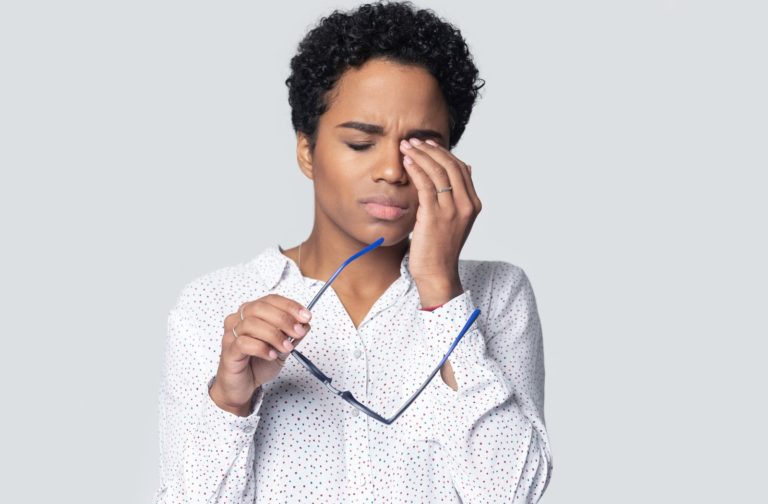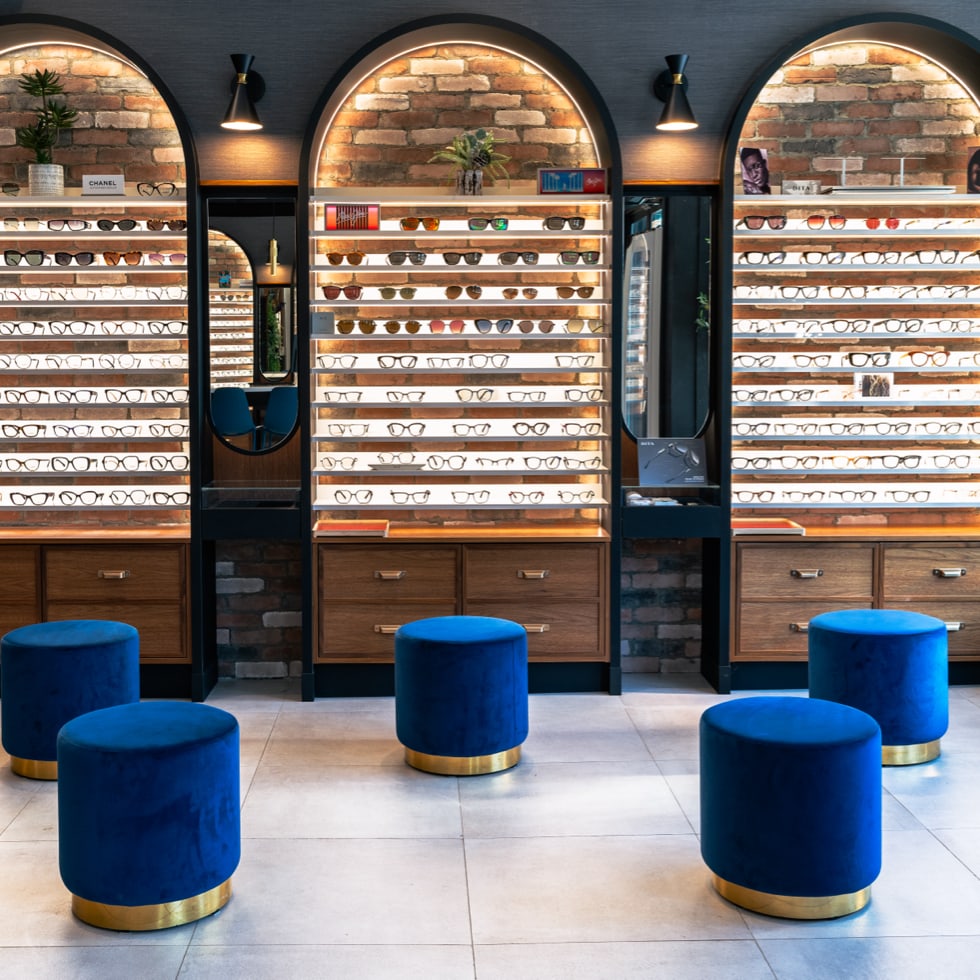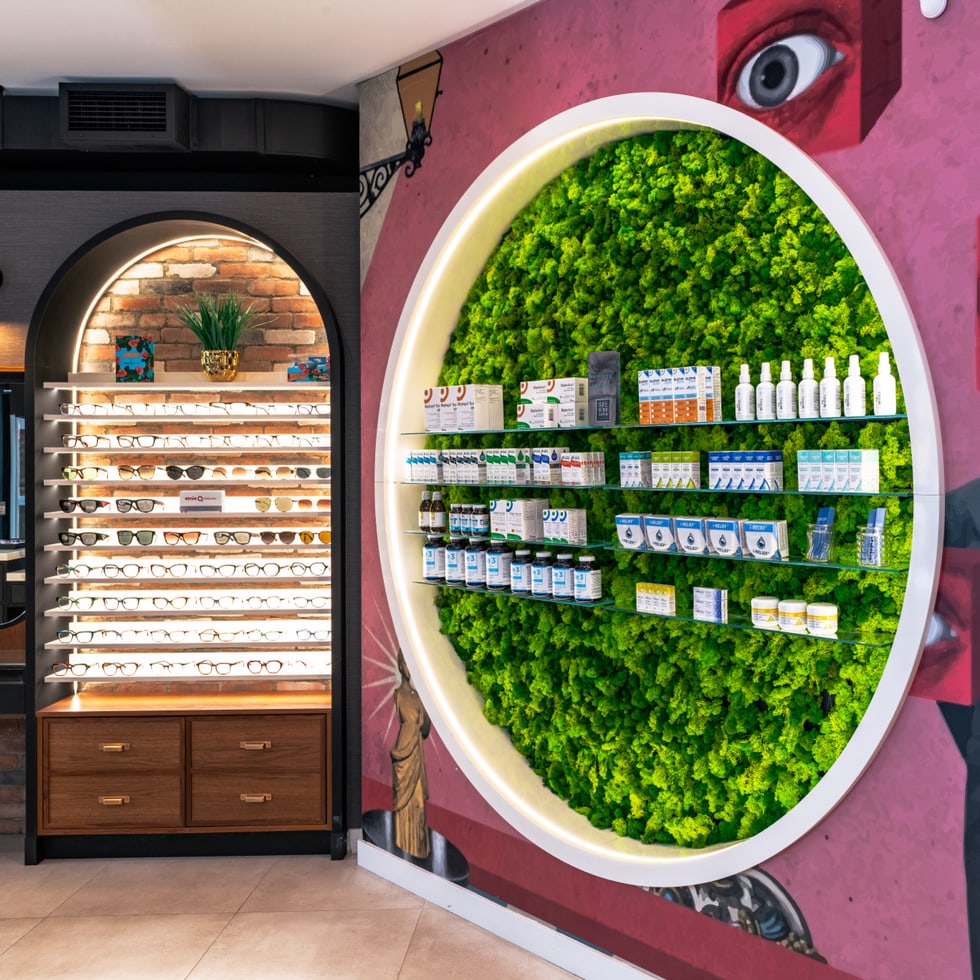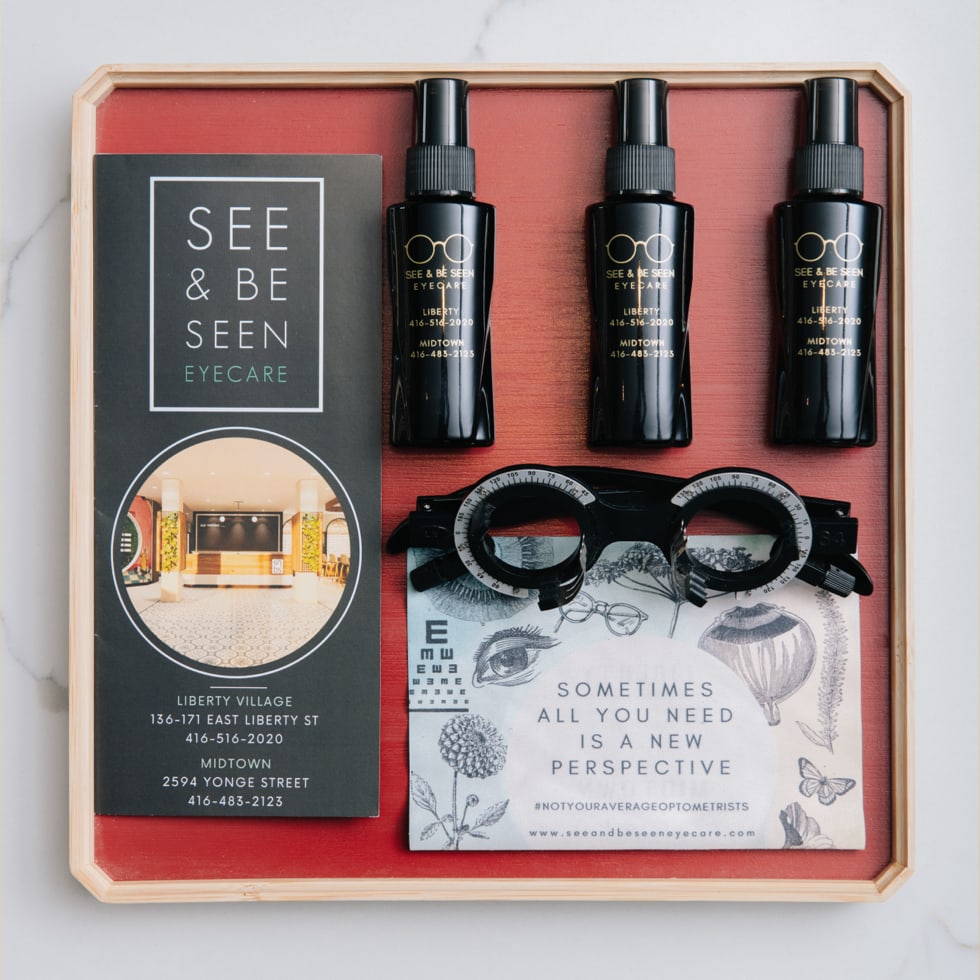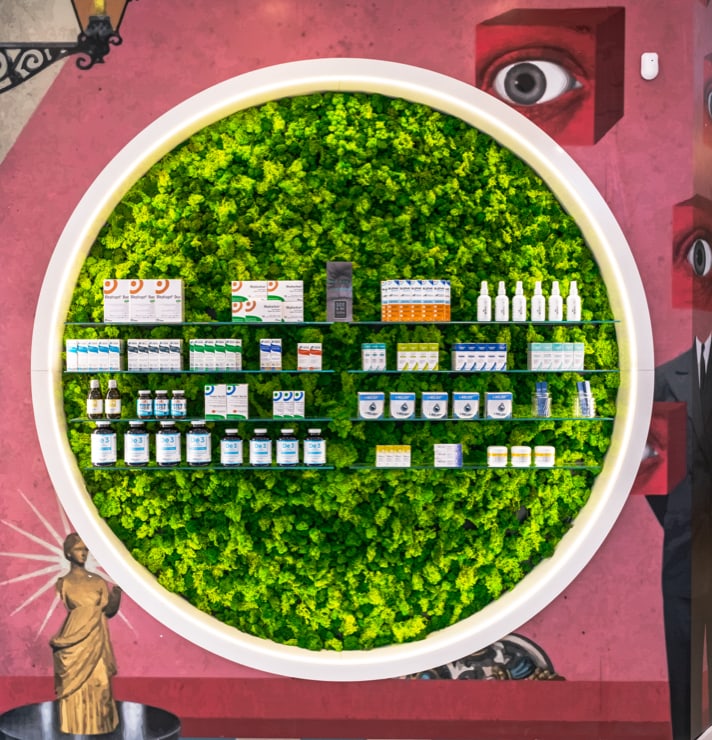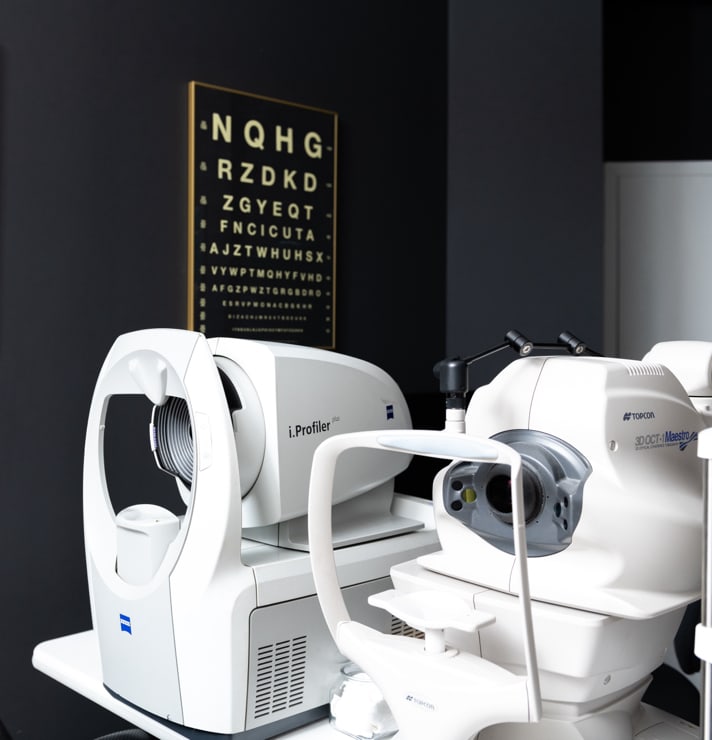Dry eye disease is a common eye condition that affects about 30% of Canadians. When the symptoms appear, they can cause irritation—not just in your eyes but your mental state, too, if it’s not treated correctly.
When you notice severe symptoms, we encourage you to see your optometrist, so they can guide you to the best dry eye therapy. Until then, we have listed 13 at-home treatments for dry eye so you can find relief when you need it.
What Is Dry Eye Disease?
There’s an essential function of your eye called tear film that keeps your eyes lubricated. Tears comprise three layers: a mucous layer, a watery layer, and an oily layer.
Dry eye disease occurs when your eyes don’t produce enough tears, tears evaporate too quickly, or one of these layers malfunctions, like a block in the meibomian glands (glands on the edge of the eyelid) or inflammation.
Symptoms of Dry Eye
How do you know if you have dry eye disease? If any of the following symptoms describe how your eyes feel, dry eye disease might be the explanation.
Common symptoms of dry eye include:
- Burning, itchiness, and irritation in your eyes
- Stringy mucus in or around your eyes
- Light sensitivity
- Eye redness
- Sandy or gritty feeling in your eyes
- Difficulty wearing contact lenses
- Difficulty with driving at night
- Sudden excess of tears (the body’s response to the irritation of dry eyes)
- Blurred vision or tired eyes
- Dryness
What Causes Dry Eye?
Dry eye causes can vary, depending on age, environment, and medical history. Your symptoms could arise from any of the following reasons:
- Aging
- Previous medical conditions, including rheumatoid arthritis, lupus, thyroid issues
- Vitamin A deficiency
- Certain medications, including hormone replacement therapy, antidepressants, birth control
- Nerve damage in the eye
- Eye conditions like blepharitis or meibomian gland dysfunction
- Eye allergies
- Blinking less often due to computer vision syndrome or certain conditions like Parkinson’s disease
- Exposure to wind, smoke, dry air
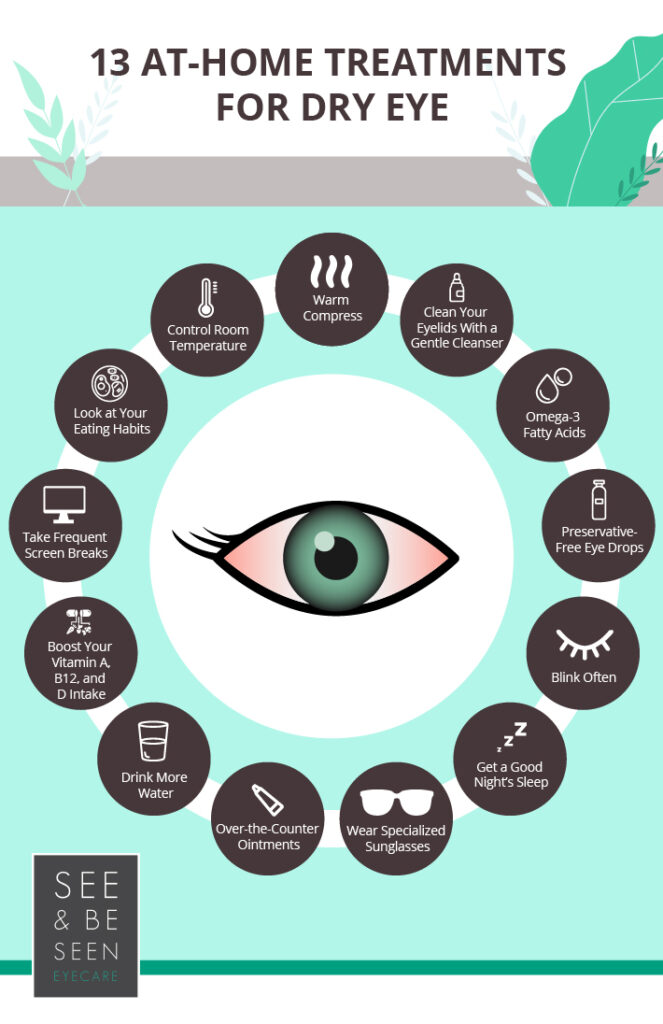
How Can I Treat Dry Eye At Home?
Your dry eye disease can be managed at home, although, if your symptoms worsen or you find they’re insufficient, chat with your eye doctor about available treatments. Many are available—you don’t have to just deal with dry eyes.
Some of these home remedies are preventative, and some can offer relief from current symptoms. These 13 measures provide you with ways to attain some eye comfort from the annoying feeling of itchy, gritty, dry eyes.
Again, if your symptoms continue or get worse, visit us to discuss how our innovative methods can help you.
- Warm Compress
Warm compresses are a go-to home remedy that can help alleviate your dry eye symptoms. The warmth can help unclog the meibomian glands by loosening debris and stimulating meibum production (the oil produced by the meibomian glands that helps lubricate your eyes). Think of spreading melted butter vs frozen butter. The heat helps melt the meibum and allows it to be spread more evenly than frozen butter.
To make your warm compress at home:
- Use a clean washcloth and dampen it with hot water, so the cloth feels warm to the touch. Alternatively, use a sock with raw rice and warm it in the microwave for 30 seconds.
- Place it over your eyes for 5 minutes and relax 🙂 for the next 5 minutes, massage your lids and spread the meibum over your eyes.
- After massaging, rinse your eyes out with lukewarm water
- Be careful not to spread microorganisms, including bacteria, between your eyes.
Some effective eye masks on the market would be worth the investment if you find you often need to apply a warm compress. We recommend the Bruder Mask, which is naturally antibacterial, washable, and reusable.
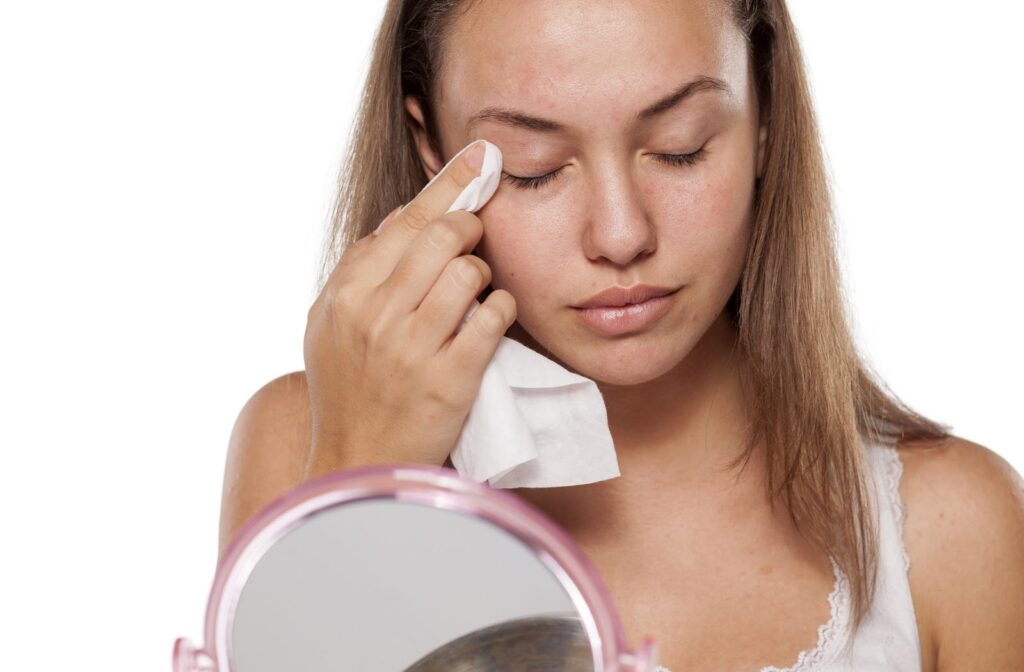
- Clean Your Eyelids With a Gentle Cleanser
Using a gentle cleanser to loosen debris is another effective at-home solution to relieve your dry eye symptoms. In addition, cleaning your eyelids can help control inflammation by ensuring your ducts are as clear from disruptive particles as possible.
Before you start cleaning your eyelids, remove any makeup that may irritate your eyes, and wash your hands. Then, with a mild cleanser and warm water on a cotton pad, gently massage your upper eyelids and eyelashes in a circular motion for about 10–20 seconds. Repeat on the lower lashes with a different cotton pad. We recommended Blephagel preservative free eye lid cleanser.
When you’re done, rinse your eyes thoroughly and pat them dry with a clean towel. So fresh and so clean!
- Control Room Temperature
Your surrounding environment can impact your eye conditions, especially when the air is too dry. Consider adding a humidifier to your office set up to add moisture to the atmosphere. Humidifier, filter, AC, heat, open windows, wind, dust
- Omega-3 Fatty Acids
These essential fatty acids are more than a buzzword—studies suggest that omega-3 fatty acids may positively impact our eye health, including dry eye syndrome.
Adding omega-3 fatty acids to your diet can be done through food sources or supplements, like PRN Omega Fish Oil. Try to add some of the following foods to your grocery list that are rich in these beneficial omega-3 fatty acids:
- Cold-water fish, like mackerel, tuna, salmon, sardines, and herring
- Ground flaxseeds and flaxseed oil
- Walnuts
- Chia seeds
- Soybeans, tofu, and soy oil
- Preservative-Free Eye Drops
Using eye drops, or artificial tears, at home can temporarily relieve your dry eye symptoms. However, we recommend preservative-free eye drops because some added preservatives could irritate your eyes and worsen your woes.
We have a complete guide on how to choose the best eye drops and offer a great selection of preservative-free eye drops for home use. If your eyes don’t tolerate the eye drops well, refrain from using them and book an appointment.
- Blink Often
This one may sound silly, but it’s an easy way to lubricate your eyes without any drops, washcloths, or store-bought remedies. Simply close your eyes as if you’re falling asleep, and hold them closed for 10-second intervals, as many times as you feel you need.
- Take Frequent Screen Breaks
Do you work from a computer or endure significant screen time? You have likely experienced digital eye strain, which can lead to more severe dry eye disease.
To combat eye fatigue from screen time, employ the tried-and-true 20/20/20 rule. This rule recommends that when you’re working at your computer, take a break every 20 minutes and look at something 20 feet away (6 metres) for 20 seconds.
- Drink More Water
We would be remiss if we didn’t list simple hydration. No brainer? Staying hydrated helps your body with tear production. Stick with water rather than drinks containing caffeine or alcohol since those can dehydrate, missing the whole point!
- Get a Good Night’s Sleep
Have you ever noticed that fatigued and dry feeling in your eyes after sleeping poorly? Lack of sleep makes it harder for the body to function properly, including the eyes.
Sleep deprivation has been linked to lower tear production, causing dry eye symptoms. So, get a good rest each night to ensure your body is in top function.
- Wear Specialized Sunglasses
What are your eyes lacking when you have dry eyes? Moisture. Specialized wrap-around sunglasses exist that are designed to keep wind and dry air out and moisture in.
Some models come with sponges that can be moistened and placed inside the glasses, increasing the humidity around your eyes. Browse our collection of glasses to find your perfect fit.
- Boost Your Vitamin A, B12, and D Intake
Sometimes it feels like the list of vitamins and supplements we need just keeps growing. Maybe so, but boosting these particular 3 can assist your ocular health.
Some products that have vitamins A, B12, and D include:
- Fish, like salmon, tuna, herring, sardines
- Carrots, broccoli, squash
- Eggs
- Fortified cereals
- Beef, liver, chicken
- Milk, yogurt, cheese
- Look at Your Eating Habits
Preventative measures allow us to boost our immune system, hopefully preventing future problems. Since dry eye is caused by inflammation in the eye glands, avoiding foods that cause inflammation would be wise to consider.
Avoid or limit the following foods that can cause inflammation according to your dietary needs and choices:
- Refined carbohydrates, such as white bread and pastries
- French fries and other fried foods
- Soda and other sugar-sweetened beverages
- Sugar and high-fructose corn syrup
- Processed meat (hot dogs, bacon, sausage)
- Processed foods
- Artificial trans fats, found in margarine, shortening, and lard
- Excessive alcohol
- Over-the-Counter Ointments
Much like eye drops, ointments and gels are a terrific home remedy for dry eye symptoms. We recommend only using them before bedtime, however, because they could cause your vision to blur.
We offer a gel (that won’t blur your vision) and an overnight ointment treatment. Learn more about our dry eye home therapies.
When to Talk to Your Eye Doctor
Dry eyes can be seriously irritating. So, if you can’t find relief using these at-home treatments, speak to your optometrist to discuss the best course of action for you. We offer comprehensive dry eye therapy, including LipiFlow and IPL Therapy.If you need further treatment for your dry eyes, we’re ready to help you! Get in touch today.

